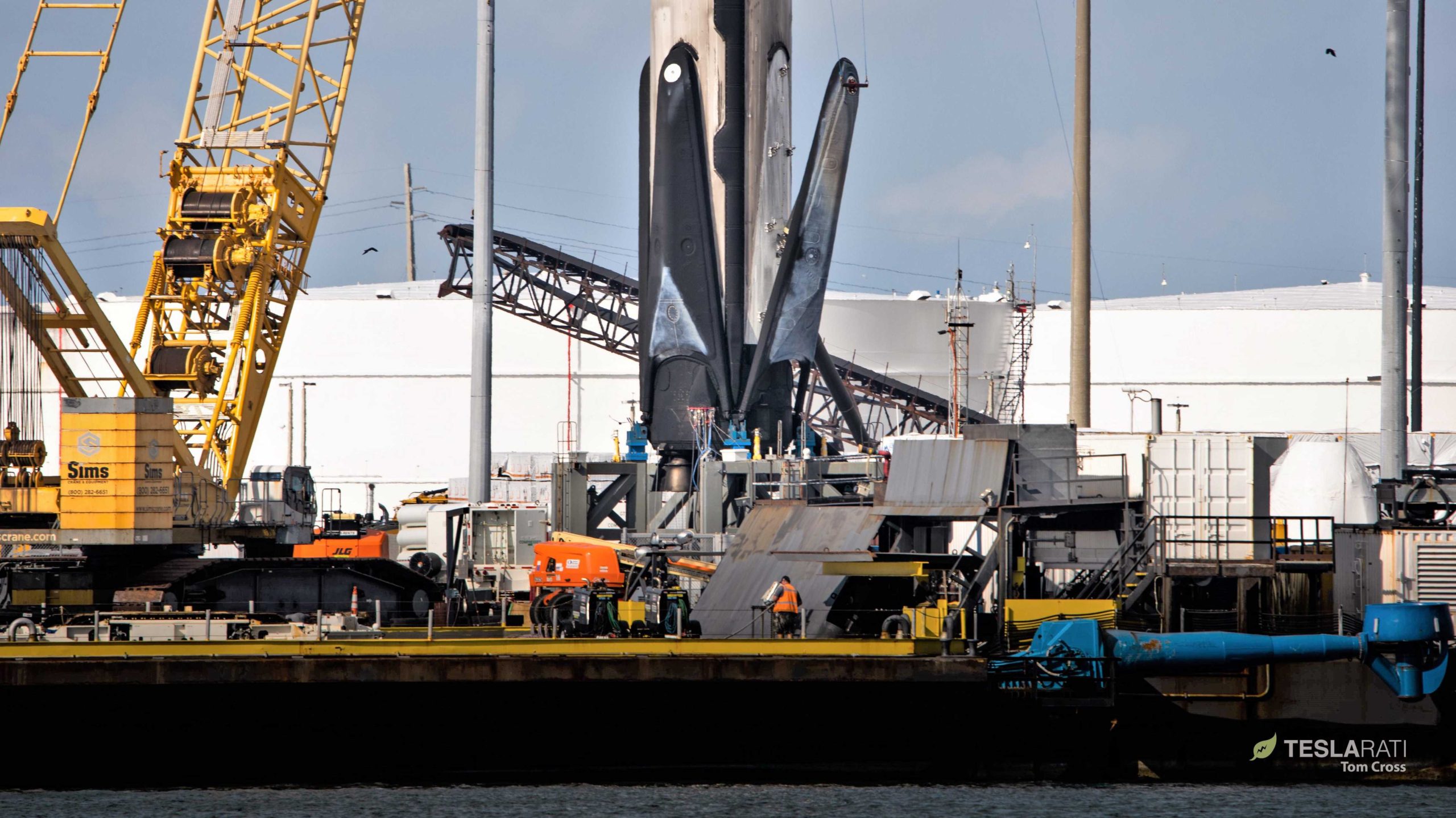
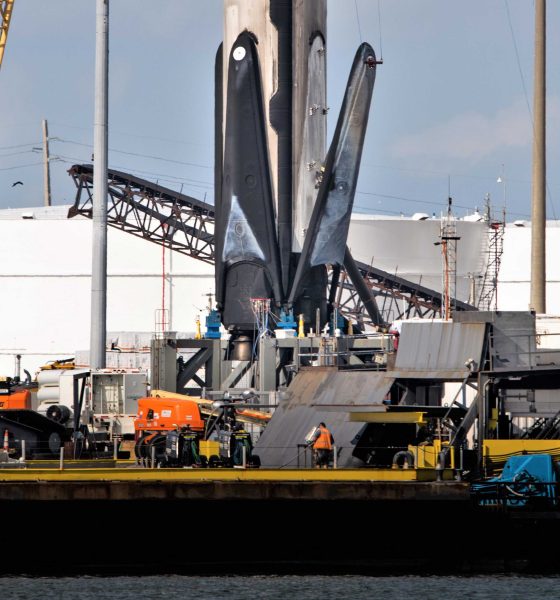
News
SpaceX's next rocket launch on track to break a 20-month-old booster reusability record
Scheduled as early as next week, SpaceX’s next rocket launch could see the company break a 20-month-old record that is closely intertwined with the reusability of its Falcon 9 and Falcon Heavy boosters.
Unsurprisingly, that record – if broken – will tag along on one of up to two dozen Starlink satellite launches SpaceX has planned for 2020. The fourth launch of upgraded Starlink v1.0 satellites and fifth dedicated launch overall, SpaceX’s next Starlink mission – deemed Starlink V1 L4 – is currently set to lift off no earlier than (NET) 10:46 am EST (15:46 UTC) on February 15th. As usual, the mission’s Falcon 9 booster will attempt to land aboard drone ship Of Course I Still Love You (OCISLY), while SpaceX recovery ships Ms. Tree and Ms. Chief may attempt to catch both Falcon payload fairing halves for the third time ever.
According to Next Spaceflight, SpaceX has assigned thrice-flown Falcon 9 booster B1056 to the Starlink launch, potentially making it the fourth SpaceX rocket to complete four separate launches. However, while SpaceX’s fourth fourth-flight milestone is significant, B1056 is – barring delays – also set to break a record that could be even more important for rocket reusability.
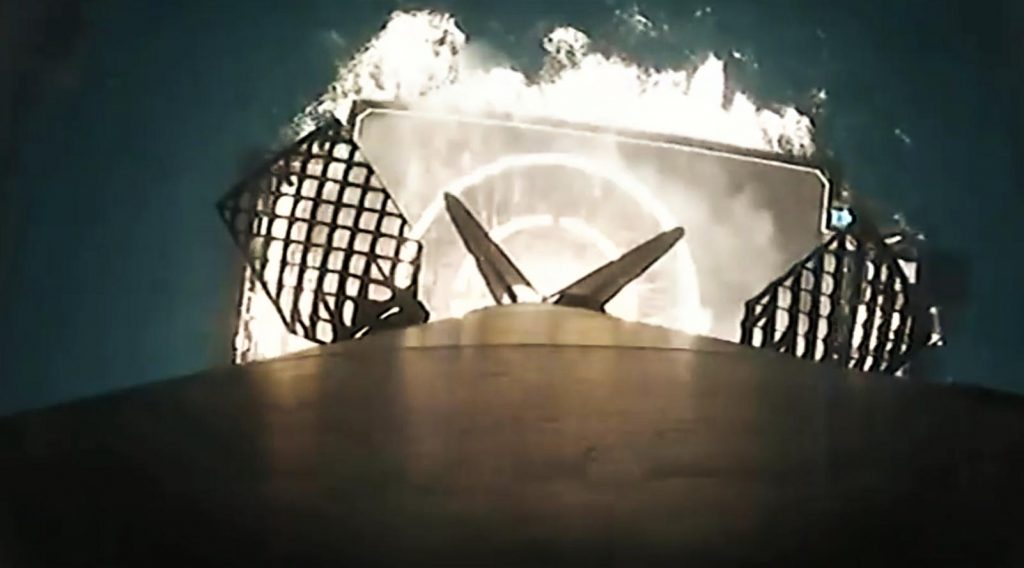
SpaceX’s 10th finished Falcon 9 Block 5 booster, B1056 completed a flawless launch and landing debut on May 4th, 2019, sending Cargo Dragon on its way to orbit for CRS-17, the spacecraft’s 17th International Space Station (ISS) resupply mission. Instead of a more normal return-to-launch-site (RTLS) recovery at SpaceX’s Cape Canaveral-based Landing Zone, SpaceX opted to land the booster on drone ship OCISLY.
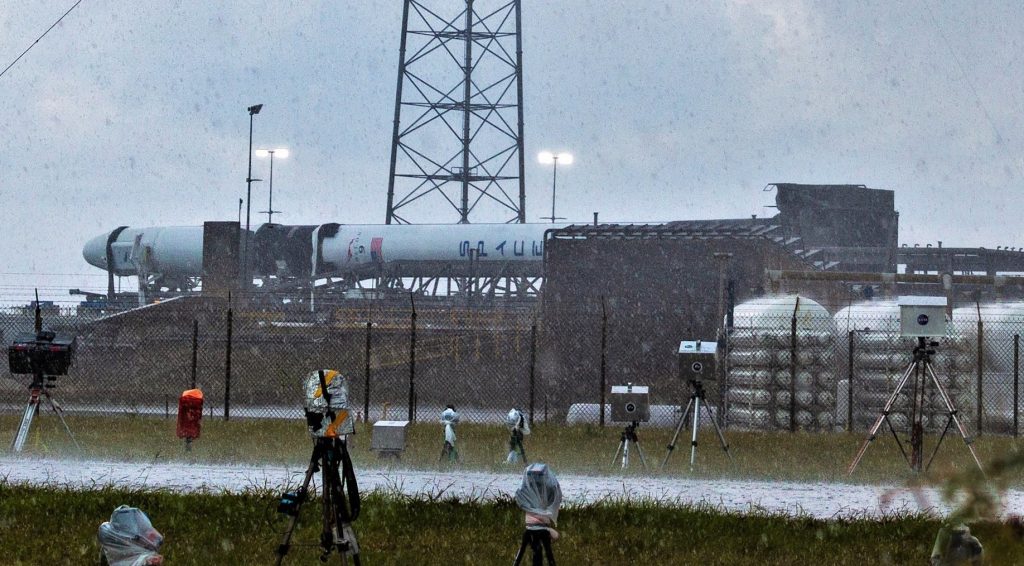
It’s believed that SpaceX and NASA made that decision out of an abundance of caution after an attempted LZ recovery following the Falcon 9 B1050’s CRS-16 Cargo Dragon launch saw the booster lose control and crash-land in the Atlantic Ocean less than a mile off the coast.
Regardless, SpaceX’s subsequent CRS-17 Cargo Dragon launch went exactly as planned and Falcon 9 B1056 landed smoothly aboard drone ship OCISLY. Less than two days after returning to Port Canaveral, B1056 even became the first SpaceX booster to have its landing legs retracted – a small but significant step along the path to true airplane-like reusability. 82 days later, B1056 successfully completed its second launch, sending another Cargo Dragon its CRS-18 resupply mission before landing at LZ-1. The booster completed its third mission a bit less than five months later, placing the 6800 kg (15,000 lb) Kacific-1 communications satellite into geostationary transfer orbit (GTO) on December 16th, 2019.
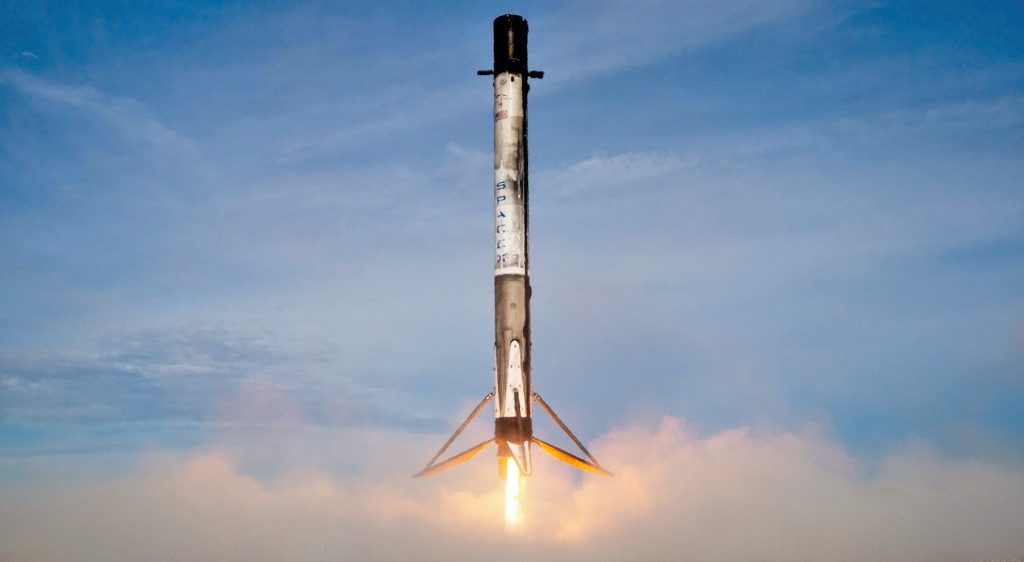
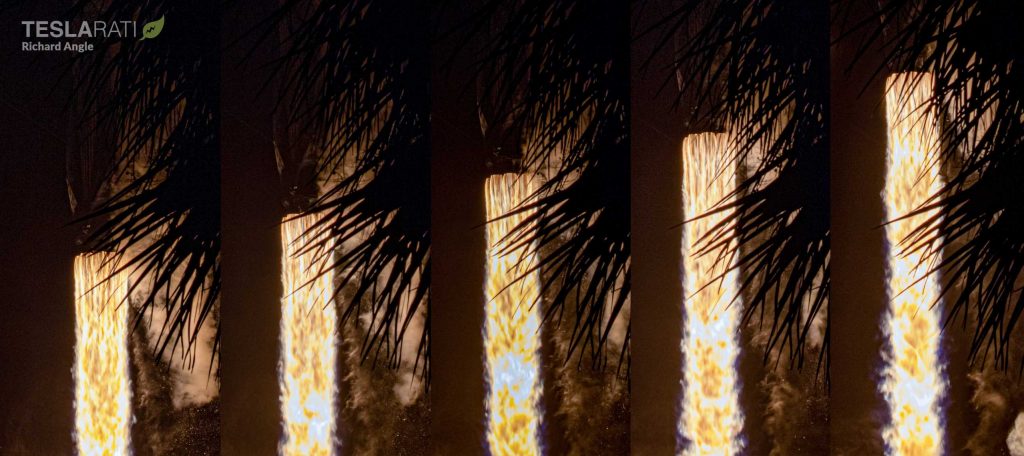
Now, SpaceX wants to launch B1056 for the fourth time as early as February 15th. Close observers will note that that would imply just 61 days between B1056’s Kacific-1 and Starlink V1 L4 launches, a feat that would make it SpaceX’s fastest ‘booster turnaround’ ever. Currently, that record stands at 71 days and was actually achieved just a month after SpaceX debuted Falcon 9’s reusability-focused Block 5 upgrade. However, that record turnaround was actually achieved by the B1045, SpaceX’s last Falcon 9 Block 4 booster.
Surprisingly, the closest SpaceX’s upgraded Block 5 rockets have gotten to beating B1045’s 71-day record was when the company turned around Falcon Heavy side boosters B1052 and B1053 in just 74 days before completing the giant rocket’s third orbital launch since February 2018. Now, barring calamities worthy of a ten-day delay, it looks likely that Falcon 9 booster B1056 will beat out the current record-holder by up to ten days (~15%).
According to a SpaceX engineer’s January 2020 presentation, SpaceX is currently capable of landing, refurbishing, and relaunching Falcon 9 and Falcon Heavy boosters in about a month (~30 days). With Falcon 9 B1056’s Starlink V1 L4 launch, SpaceX will hopefully be taking its biggest step in 20 months towards the goal of reusing Falcon boosters in a matter of days.
Check out Teslarati’s Marketplace! We offer Tesla accessories, including for the Tesla Cybertruck and Tesla Model 3.

News
Ford cancels all-electric F-150 Lightning, announces $19.5 billion in charges
“Rather than spending billions more on large EVs that now have no path to profitability, we are allocating that money into higher returning areas, more trucks and van hybrids, extended range electric vehicles, affordable EVs, and entirely new opportunities like energy storage.”
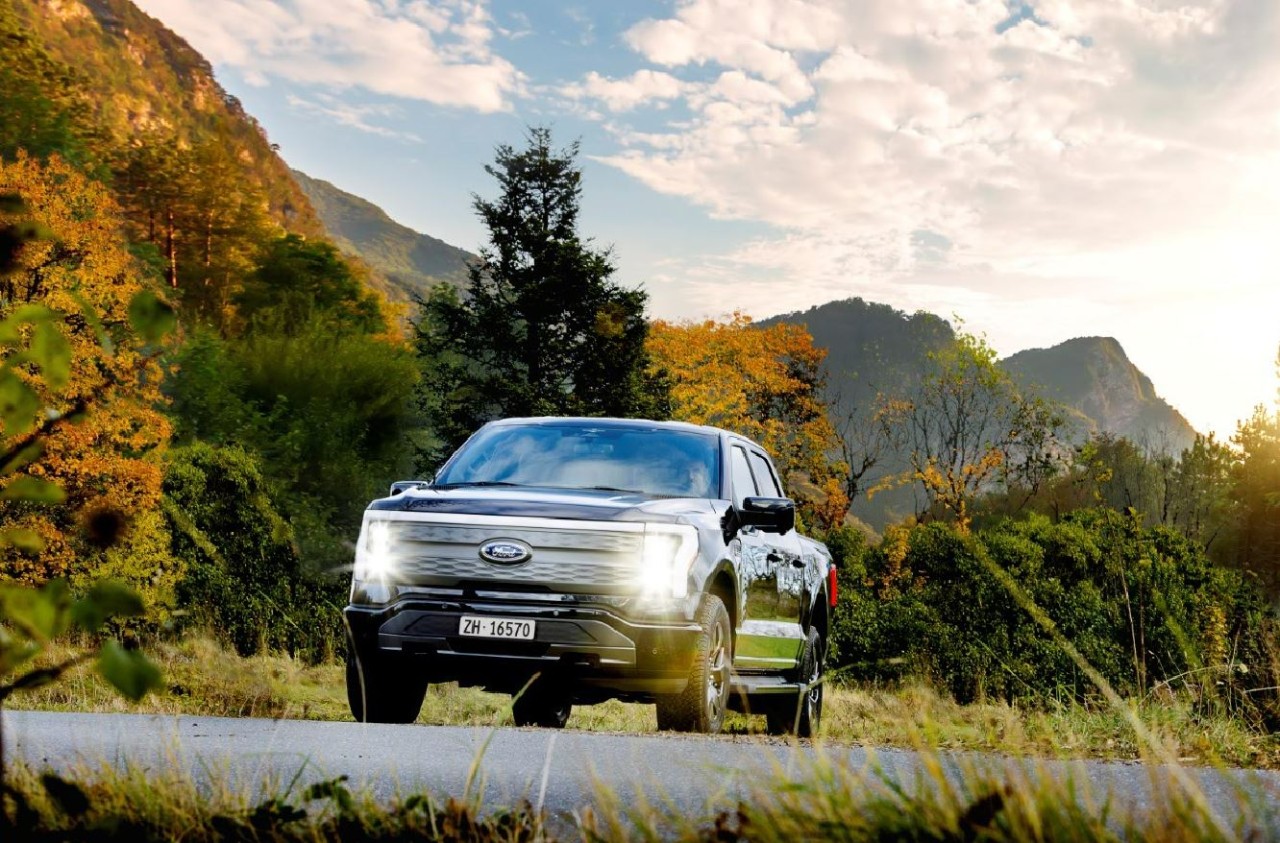
Ford is canceling the all-electric F-150 Lightning and also announced it would take a $19.5 billion charge as it aims to quickly restructure its strategy regarding electrification efforts, a massive blow for the Detroit-based company that was once one of the most gung-ho on transitioning to EVs.
The announcement comes as the writing on the wall seemed to get bolder and more identifiable. Ford was bleeding money in EVs and, although it had a lot of success with the all-electric Lightning, it is aiming to push its efforts elsewhere.
It will also restructure its entire strategy on EVs, and the Lightning is not the only vehicle getting the boot. The T3 pickup, a long-awaited vehicle that was developed in part of a skunkworks program, is also no longer in the company’s plans.
Instead of continuing on with its large EVs, it will now shift its focus to hybrids and “extended-range EVs,” which will have an onboard gasoline engine to increase traveling distance, according to the Wall Street Journal.
“Ford no longer plans to produce select larger electric vehicles where the business case has eroded due to lower-than-expected demand, high costs, and regulatory changes,” the company said in a statement.
🚨 Ford has announced it is discontinuing production of the F-150 Lightning, as it plans to report a charge of $19.5 billion in special items.
The Lightning will still be produced, but instead with a gas generator that will give it over 700 miles of range.
“Ford no longer… pic.twitter.com/ZttZ66SDHL
— TESLARATI (@Teslarati) December 15, 2025
While unfortunate, especially because the Lightning was a fantastic electric truck, Ford is ultimately a business, and a business needs to make money.
Ford has lost $13 billion on its EV business since 2023, and company executives are more than aware that they gave it plenty of time to flourish.
Andrew Frick, President of Ford, said:
“Rather than spending billions more on large EVs that now have no path to profitability, we are allocating that money into higher returning areas, more trucks and van hybrids, extended range electric vehicles, affordable EVs, and entirely new opportunities like energy storage.”
CEO Jim Farley also commented on the decision:
“Instead of plowing billions into the future knowing these large EVs will never make money, we are pivoting.”
Farley also said that the company now knows enough about the U.S. market “where we have a lot more certainty in this second inning.”
News
SpaceX shades airline for seeking contract with Amazon’s Starlink rival

SpaceX employees, including its CEO Elon Musk, shaded American Airlines on social media this past weekend due to the company’s reported talks with Amazon’s Starlink rival, Leo.
Starlink has been adopted by several airlines, including United Airlines, Qatar Airways, Hawaiian Airlines, WestJet, Air France, airBaltic, and others. It has gained notoriety as an extremely solid, dependable, and reliable option for airline travel, as traditional options frequently cause users to lose connection to the internet.
Many airlines have made the switch, while others continue to mull the options available to them. American Airlines is one of them.
A report from Bloomberg indicates the airline is thinking of going with a Starlink rival owned by Amazon, called Leo. It was previously referred to as Project Kuiper.
American CEO Robert Isom said (via Bloomberg):
“While there’s Starlink, there are other low-Earth-orbit satellite opportunities that we can look at. We’re making sure that American is going to have what our customers need.”
Isom also said American has been in touch with Amazon about installing Leo on its aircraft, but he would not reveal the status of any discussions with the company.
The report caught the attention of Michael Nicolls, the Vice President of Starlink Engineering at SpaceX, who said:
“Only fly on airlines with good connectivity… and only one source of good connectivity at the moment…”
CEO Elon Musk replied to Nicolls by stating that American Airlines risks losing “a lot of customers if their connectivity solution fails.”
American Airlines will lose a lot of customers if their connectivity solution fails
— Elon Musk (@elonmusk) December 14, 2025
There are over 8,000 Starlink satellites in orbit currently, offering internet coverage in over 150 countries and territories globally. SpaceX expands its array of satellites nearly every week with launches from California and Florida, aiming to offer internet access to everyone across the globe.
Currently, the company is focusing on expanding into new markets, such as Africa and Asia.
News
Tesla Model Y Standard stuns in new range test, besting its Premium siblings
Tesla’s newer vehicles have continued to meet or exceed their EPA estimates. This is a drastic change, as every 2018-2023 model year Tesla that Edmunds assessed did not meet its range estimates.

The Tesla Model Y Standard stunned in a new range test performed by automotive media outlet Edmunds, besting all of its Premium siblings that are more expensive and more luxurious in terms of features.
Testing showed the Model Y Standard exceeded its EPA-estimated range rating of 321 miles, as Edmunds said it is the “longest-range Model Y that we’ve ever put on our loop.” In the past, some vehicles have come up short in comparison with EPA ranges; for example, the Model Y’s previous generation vehicle had an EPA-estimated range of 330 miles, but only drove 310.
Additionally, the Launch Series Model Y, the first configuration to be built in the “Juniper” program, landed perfectly on the EPA’s range estimates at 327 miles.
It was also more efficient than Premium offerings, as it utilized just 22.8 kWh to go 100 miles. The Launch Series used 26.8 kWh to travel the same distance.
It is tested using Edmunds’ traditional EV range testing procedure, which follows a strict route of 60 percent city and 40 percent highway driving. The average speed throughout the trip is 40 MPH, and the car is required to stay within 5 MPH of all posted speed limits.
Each car is also put in its most efficient drive setting, and the climate is kept on auto at 72 degrees.
“All of this most accurately represents the real-world driving that owners do day to day,” the publication says.
With this procedure, testing is as consistent as it can get. Of course, there are other factors, like temperature and traffic density. However, one thing is important to note: Tesla’s newer vehicles have continued to meet or exceed their EPA estimates. This is a drastic change, as every 2018-2023 model year Tesla that Edmunds assessed did not meet its range estimates.
Tesla Model Y Standard vs. Tesla Model Y Premium
Tesla’s two Model Y levels both offer a great option for whichever fits your budget. However, when you sit in both cars, you will notice distinct differences between them.
The Premium definitely has a more luxurious feel, while the Standard is stripped of many of the more premium features, like Vegan Leather Interior, acoustic-lined glass, and a better sound system.
You can read our full review of the Model Y Standard below:
Tesla Model Y Standard Full Review: Is it worth the lower price?








